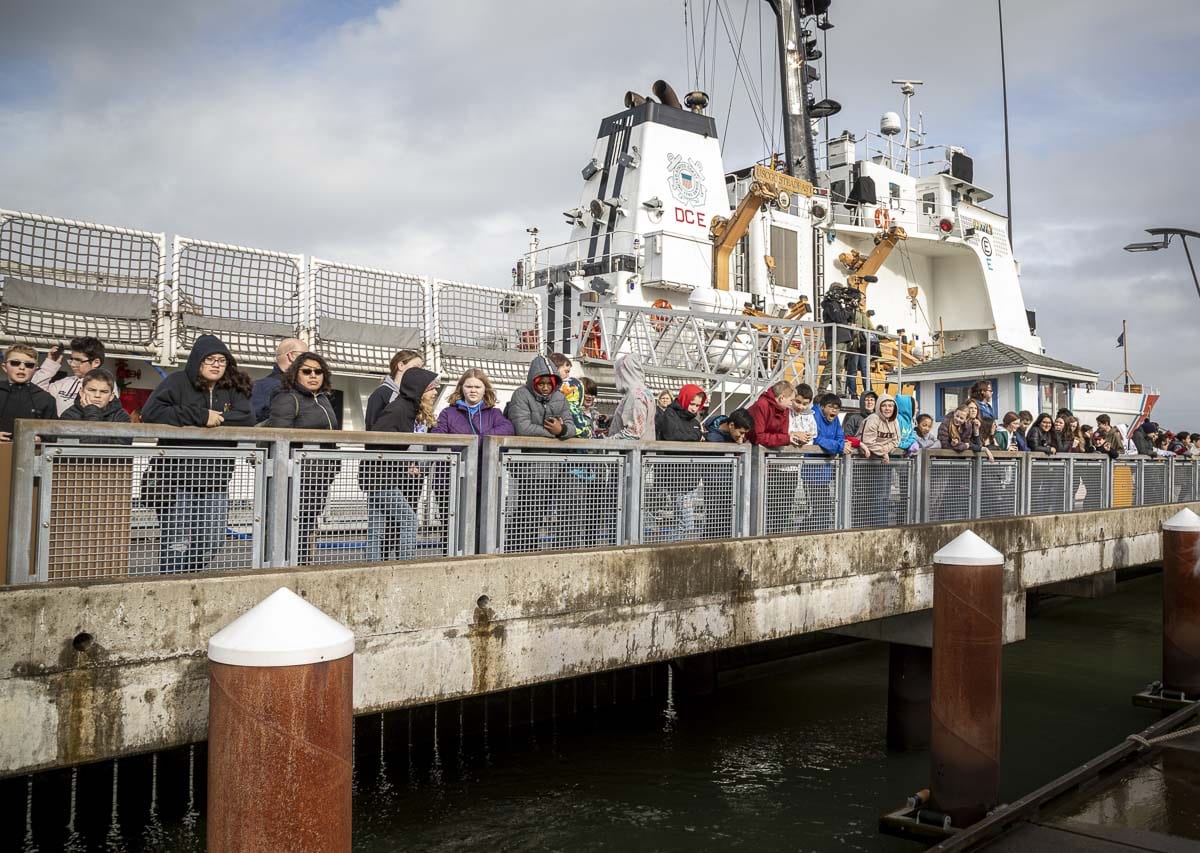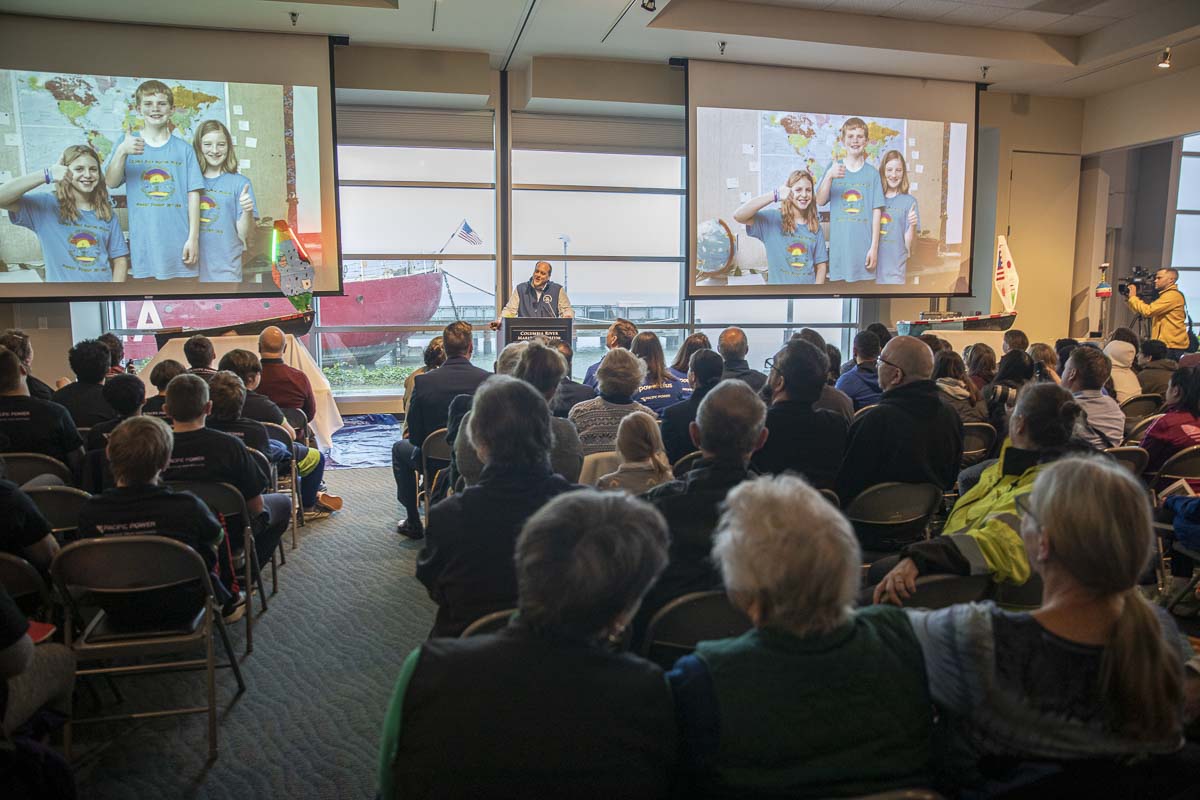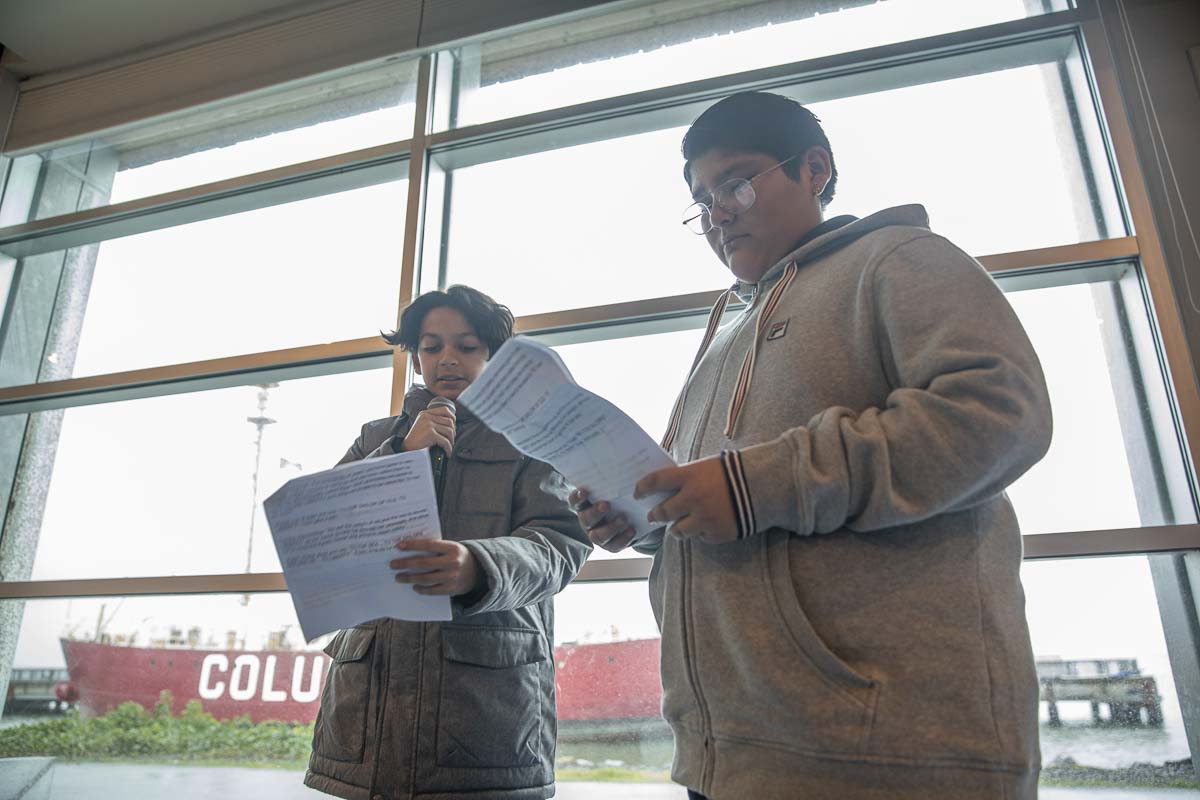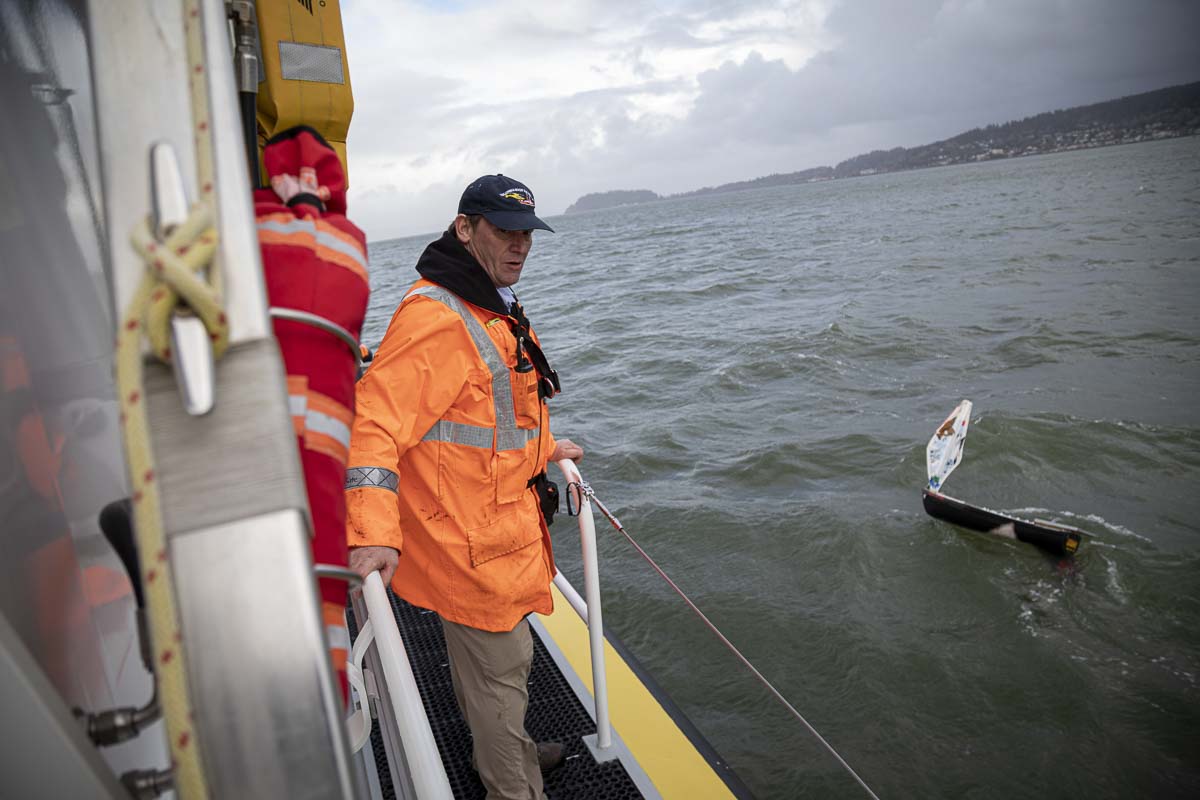Wy’east students travel to Astoria to christen and launch their mini-sailboats traveling to Japan
ASTORIA, Oregon — “To the sea … To the sailors before us … To ‘Liberty.’” A bottle smashed against the bow of a small sailboat, a crowd cheered and a crew of young students became mariners and explorers.

The vastness of the mighty Pacific Ocean was about to be tamed just a bit, by the knowledge that exploration is possible and the realization the people living on the far side of the planet have more in common with them than they may have ever dreamed of.
Many of them discovered newfound confidence through the journey of building, documenting, routing, and launching their own mini-boat to sail the nearly 5,000 nautical miles across the Pacific Ocean to Japan.
“We’re sending boats to a place I’ve never been before, I don’t really know the people there, and … our class is more of a team than we normally are,” said Wy’east student Venunye “Ven” Tanakloe. “We work together and … the teamwork and all the different things, like it’s a different experience than what we normally get to do in the class.”
The Mini-boat Program was founded in 2017 by the Columbia River Maritime Museum (CRMM) in Astoria, Ore. In partnership with sponsor Pacific Power and school districts across the region, CRMM has helped launch 21 mini-boats which together have sailed nearly 60,000 nautical miles.

This year, students at Wy’east Middle School in Vancouver joined the ranks of the mini-boat sailors and built two mini-boats to be launched; one from Oregon and the other from Japan. Their Oregon mini-boat, “Liberty,” is named for the Liberty Ships of WWII that were constructed in the Astoria and Vancouver areas.
“At first it was a little bit of a shock, like working with people I am not familiar with, but I kind of got into it,” said Wy’east student London Lockwood. “It was fun to be kind of hands on, like, as Quartermaster being so important in fate of the boat.”
The program came to Wy’east when science teacher Joe Boken connected with CRMM’s Education Director Nate Sandel. Sandel worked personally with Boken and the students to facilitate the delivery, assembly and decoration of the mini-boat. The students, however, ran the show.
“When you give students an opportunity, and you give them high expectations, they almost always rise to the occasion,” Sandel said. “We were really thinking of how can we engage every type of learner in the classroom? So, do you like to build boats and work with antifouling paint and epoxy, there’s a job for you. If you want nothing to do with anything messy, and you want to get behind the computer and study the science of weather, then there is a job for you. And if you love making videos for YouTube, you could be on our documentarian team, which documented every single step of the process. So by that, we’re finding a spot for every student.”
Along with Warrenton Grade School and Columbia City Elementary, both in Oregon, Wy’east students sent their first boat to their sister schools in Japan. Okki Elementary, Kanehama Elementary and Tanesashi Elementary all received boats that they have named, christened and launched themselves. One, the Wy’east Japan mini-boat, is currently nearing Midway Island, and could make it across the Pacific before the end of the school year, Sandel said.

Founded in the wake of the tragedy of the 2011 tsunami along Japan’s eastern seaboard, the program is designed to connect students of different cultures and nations to each other and display commonality and teamwork, Sandel said.
“I’m always looking for opportunities for my students to engage in science and have opportunities to do things that they can say, ‘Hey, that’s cool, I did that,’” Boken said. “They’re interacting with a culture that for most of them, they maybe would never interact with, never learn about, never have that opportunity to be able to say, ‘I worked on a project with students from Japan.’ And that, ‘I worked on a project with students who are directly affected by this scientific hazard of an earthquake and a tsunami.’”
On Jan. 21, Wy’east students traveled to the CRMM in Astoria for the Mini-boat Summit of 2020. There, they presented and christened their mini-boat, as well as sent it off to sea with the Columbia River Bar Pilots. Members of the community, the U.S Coast Guard and Pacific Power filled the museum to hear the stories of construction, learning and discovery.
“You might ask why is a power company partnering with a maritime museum, you know, in a mini-boat project, and it really comes down to STEAM skills,” said Pacific Power CEO Stefan Bird. “At our company, we’re about a group of innovators and problem solvers tackling some of the biggest challenges that we have today. The kind of skills that you’re learning here in this program … are exactly the sort of skills that we need at our company.”

In the construction and research needed to complete the mini-boat project, students at Wy’east and elsewhere were encouraged to learn in the five areas known as STEAM: Science, Technology, Engineering, Arts, and Mathematics. Students, as said by Sandel, were asked to find an area of work that they were passionate about and go for it.
Each vessel is equipped with a GPS powered by a solar panel, which will transmit the boat’s location in the ocean as it traverses the expanse. Directions in various languages are printed along the deck of the boat so that if it is found by people elsewhere than Japan, they can relaunch it for the students. Students also included gifts for their peers in Japan inside the sealed hull of the mini-boat.
“There was this time where me and my partner were like, shooting everybody and everybody was outside like painting the boat and working on the boat, and then me and my partner were just like filming everybody,” said Wy’east student Jocelyn Diaz, who worked on the documentary team.
“We had to find, like gifts we could give to the children at the Japanese school,” said Wy’east student Natasha Prasad. “We had to make the hull like, put some of this painting material stuff on it, and then we’re going to cover the mini-boat up with that so the presents would be safe.”
“A lot of it was similar, but I think just, you know, like, buckling down and figuring out wave patterns and just, that’s cool and it’s fascinating,” Lockwood, who worked as Quartermaster, said.
Due to 18-foot waves out at sea on Jan. 21, the bar pilots opted to run sea trials in the river for the students, and will actually launch the mini-boats on Friday or Saturday of this week.
For more information on the mini-boats program, to track the mini-boats via GPS or to learn more about the Columbia River Maritime Museum, visit them online or on Facebook, where updates on the mini-boats’ voyages are posted.




